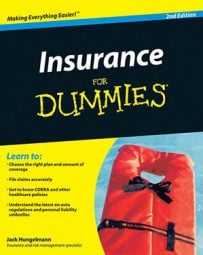People are exposed to many different types of risks in their financial lives. Practical and effective ways to deal with these risks typically means insurance. Finance and investing textbooks define two primary types of risk:
Systematic risk is the type of risk that is impossible to avoid completely. Examples of systematic risk include inflation, recessions, and war. You can do either very little or nothing to protect yourself from systematic risks, and no amount of portfolio diversification can eliminate systematic risk.
Unsystematic risk is a risk that affects an isolated group of companies, industries, or countries. A company’s stock plummeting after the news that the FDA declined approval of its highly anticipated new drug is an example of unsystematic risk. Diversification substantially reduces or eliminates unsystematic risks.
Systematic and unsystematic risks are the textbook definitions of financial risks, but risk is better defined as uncertainty. For example:
Will you continue to be employed?
Will your company require you to relocate?
What happens if your teenager wrecks the car?
What if the interest rate on your adjustable rate mortgage skyrockets?
What if your in-laws have to move in?
What happens if you live to be a centenarian?
What happens if your child or significant other is diagnosed with a long-term illness requiring you to quit your job and stay home to care for them?
What happens if you wake up at age 60 and discover that you no longer want to work for a living, but you haven’t saved enough to retire?
What happens if your spouse dies prematurely?
What if your home is destroyed by a flood?
What if you’re sued because your dog bites the neighbor’s kid?
The list could go on and on. Insurance is designed to help you when can’t afford to bear a risk personally.
Successful financial planning involves anticipating future events and all probable outcomes — both good and bad. Risk management attempts to eliminate, minimize, or transfer the risk of all your anticipated bad outcomes.
You can handle several risks without much hardship if you have sufficient cash reserves on hand. For example, your teenager wrecks the car — hopefully, no one is hurt, and you have auto insurance — but you also need some cash to cover the deductible due before your insurance kicks in. You may even need additional cash to pay for a rental car until yours can be repaired. In this example, you have shouldered a certain amount of risk yourself: the deductible and the cost of the rental car. You have also transferred the majority of the financial risk to the auto insurance company.
Establishing a safety net of three to six months worth of cash reserves, adequately insuring your home and property, your health, and your income, and remaining very aware of potential dangers goes a long way toward ensuring that you and your family won’t be financially devastated when bad things happen — and they do happen. It’s not a matter of if, but a matter of what and when.

